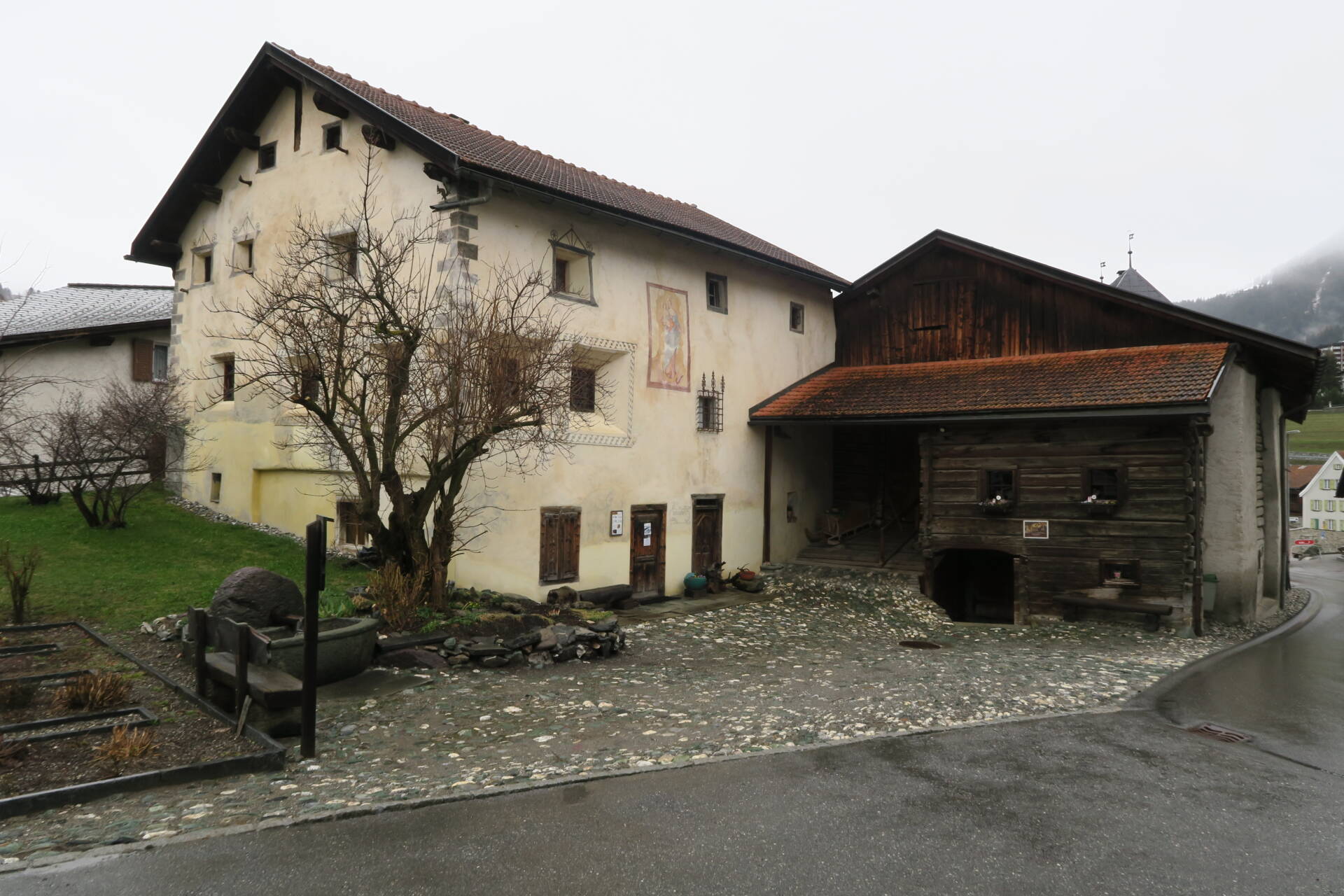This region in the canton of Grisons (Graubünden) has many art treasures (the Carolingian church of St. Peter in St. Mistail, for example) and is an old transit route.
The Julier Pass was already in use in Roman times. Two Roman columns are the silent witnesses. The Septimer Pass has always been a competitor, even in the time of the Romans.
However, after the opening of the Splügen Pass and the Gotthard Pass in the thirteenth century, the Julier Pass and the Septimer Pass lost their significance.
The increase in tourism and the renovation of the roads brought the Julier Pass back to life again in the nineteenth century. Many coaches drove from Chur to Oberengadin and crossed the Julier pass. The Posthotel Löwen in Mulegns bears witness to this era.
The Gotthard tunnel (1882) and the Albula railway (1903) made this road less relevant. The cantonal prohibition of cars until 1925 was also not helpful.
Oberhalbstein (Surses in Romansh) fell into a deep sleep until 1960 and the rise of tourism. From Tiefencastel (near the Carolingian monastery of St. Mistail), the Julierroad leads via the canyon Crap Ses (or the tunnel) to the valley and the beautiful Ela nature park, via Savognin and Rona to Mulegns and the Marmorera reservoir.

Marmorera
The town of Marmorera disappeared into the waves in 1954 and was rebuilt elsewhere (after a referendum, of course).
Bivio is the last town at the foot of the Julier Pass. Medieval Bivio was called Stabulum Bivio, the stable at the junction (bi via). This is for good reason: There is a choice between the Septimer Pass, the Julier Pass, or the Stallerberg.
Bivio is a junction of three cultures and languages: the German-speaking Walser of Avers, the Italian-speaking inhabitants of Bergell and the Romansh population.
German and Romansh are the main languages, although Italian is also spoken, even after the merger with other (Romansh-speaking) municipalities in the valley (Cunter, Marmorera, Mulegns, Riom, Salouf, Savognin, Parsonz, Sur and Tinizong-Rona).
This municipality is called Surses and has about 2,500 inhabitants.
(Source: www.valsurses.ch)







